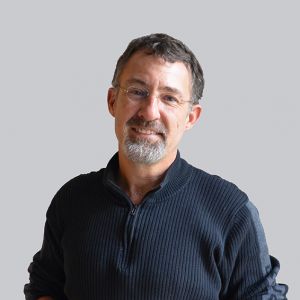I recently participated in a project pursuit (that we lost), in which, we were asked to describe our “innovations.” Though we lost, the project team complimented us on our innovation and said that this had been the primary reason we had been in the running – they knew we would take them farther than any other team.
I do think we are known as an innovative company, not least, I’m sure, because we co-won (with our partners P+W) the Kaiser Small Hospital Big Idea competition for the hospital of the future. Indeed, we have now created an Innovation Strategic Initiative and team inside Mazzetti to, in fact, drive us to constantly improve on our innovative ability. I tell people inside Mazzetti that I want us to be “the Ideo” of industries we serve; the company who brings innovation and design thinking to solve ANY problem of our clients.
But, the next question must be, what is innovation? More to the point, how do you innovate in healthcare facilities, since so many of our clients are healthcare owners? Many studies consider the rate of diffusion of medical innovation. One study found that it takes as long as 17 years for a medical innovation to become mainstream (Morris, Wooding, Grant, “The answer is 17 years, what is the question: understanding time lags in translational research,” Journal of the Royal Society of Medicine, December 2011, vol. 104, no. 12, 510-520, @510.) I often joke as I reflect on what I see from healthcare buildings that healthcare design and, worse, healthcare codes trump the medical industry in their slow pace of change. Every healthcare architect learns to sit with the user groups, understand what they think they need, and translate that into construction of buildings that perpetuate old ways of dong things. And, rightly so—the tail of healthcare buildings must be waved by the dog of clinical practice.
And so, the questions about innovation are big. How CAN we innovate in that kind of environment?
Compounding the problem for me, of course, is the fact that I work for an engineering company. And, while engineers have been known to make grand leaps of innovation, largely, we are risk–averse creatures of habit. But the primary industry, in which we work, does everything to discourage innovation. In this industry, the incentives rewarding innovation are rather paltry, while the consequences of doing something that doesn’t work are pretty staggering; and, innovation requires failing, sometimes.
And so, in the face of this industry innovation inertia, we are trying to advance innovation in at least four ways:
- We are building a company culture in which every project contains some innovation. I believe that a particular project can actually be a difficult place within which to innovate on any kind of scale. Healthcare clients don’t like to take big risks. I think everyone one of our clients tells us they want “to be on the leading edge, not the cutting edge.” But I also strongly believe in pilot projects. And I think every project can be an opportunity to explore something new. We probably do several hundred projects every year. If every one of them contains a very small pilot, the new knowledge gained will be immense. We are trying to make every project an opportunity for learning.
- In the book Better (one of the books of my professional Bible), Dr. Gawande discusses the idea of positive deviance. That is, how does a person or organization consistently outperform others? One of the ways he suggests moving towards positive deviance is by measuring something. Measuring ANYTHING. Dr. Gawande argues that measuring things provides information that allows improvement. And, consistent implementation of improvement is the very definition of innovation. And so, we measure. We are currently measuring water consumption of every one of our offices, in order to learn so we can improve our own performance but more importantly, so we can help our clients improve theirs. We are measuring, as clients allow, the energy consumption of the buildings we design. So, we can learn, improve, innovate.
- Mazzetti talks about solving problems through four lenses. The first of our lenses is Research and Policy. Our clients, rightly fear being on the bleeding edge. And so, we are the scalpel, but outside of project work. Codes, standards, and best practices are where the edges slowly move from bleeding to leading. But, change they must, as healthcare evolves. And so we work to develop new says of looking at the world and helping regulators move towards better policy that shifts that edge.
- Finally, we have begun to invest in outside innovation that can help us and help our clients. This started a few years ago when we invested in a couple of startup companies that had new technologies for the recapture of waste anesthetic gas. Next, we invested in a VC firm that brings new technologies to the built environment. We are able to work with this firm to see new technologies and to – pilot them with our clients, honing them to market-ready products. And so, we come full circe.
Innovation is exciting. It is exciting at least partly because it is scary. I’ve read a lot about people who are addicted to jumping out of airplanes; I guess my addiction is jumping out of the cockpit of conventional thinking when it stands in the way of better ways of doing things.
As hard as it is to innovate, we are building this kind of company. I hope our clients will work with us in careful, disciplined innovation. I hope our clients will help us measure and will learn with us so we can all do better. I hope our people will deliver on this vision. We are living in a time when innovation and improvement are urgently needed. I hope that, working together, we will innovate, we will improve, and we will make the world a better place.
Interested in what you see? Subscribe to receive monthly news and information
more tailored to what you need.

